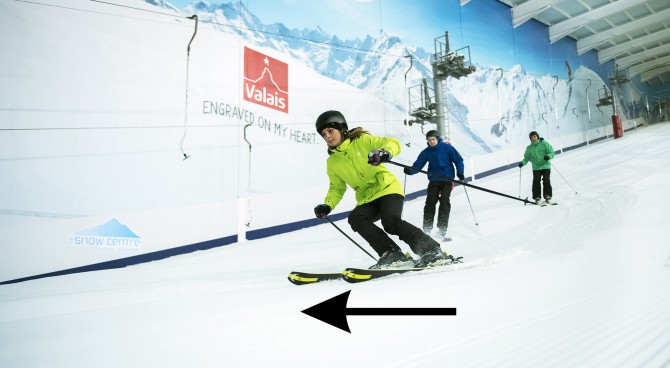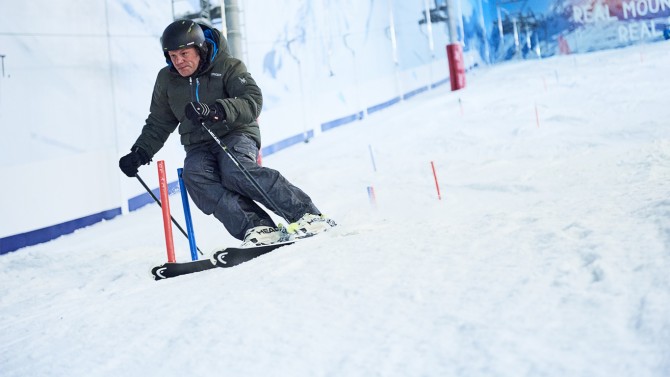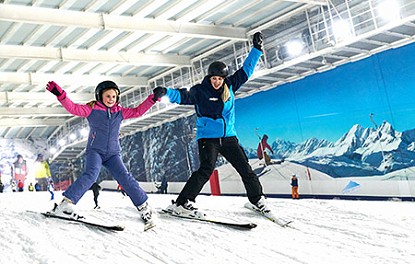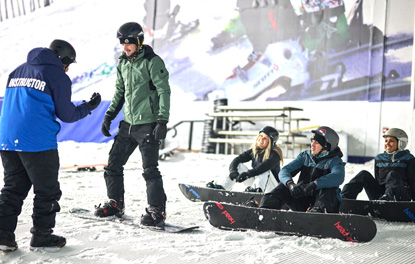How To Use Ski Poles
15 October 2018

The Snow Centre’s Head of Snowsports describes how and why we use poles in alpine skiing.
When starting out most skiers will learn how to ski without using ski poles in their first ski lessons; when it comes time to use them, many may not have a clue how to use them. Understanding how to use ski poles can allow you to move quickly across flat snow and getting back to the slopes quicker.
As a skier, it is important to know what size ski poles do I need and why you need them in the first place. In this blog, we will teach you not only how to use them but also the perfect size for you. The Snow Centre is the perfect place to learn how to use ski poles with a variety of kids' ski lessons, adult ski lessons, and fun full-day ski lessons.
Do you need ski poles?
Ski poles, also known as ‘sticks’ or just 'poles’, are used by skiers for balance, rhythm, accuracy, timing, and support. For beginners, ski poles can provide extra stability as you get used to walking in skis or centring your balance. When you get used to skiing at high speeds, more advanced skiers will use their ski poles in a radically different way, with the poles being used for attaining higher speeds rather than moving across the snow.
Usually made from either aluminium, fibreglass, carbon fibre, or a combination of the three, ski poles can vary in design. Most ski pole designs can be used for all types of skiing, but there are a few that are specifically engineered with the ski discipline in mind. For example, ski racers may have lighter-weight, shaped poles to allow for faster speeds.
How to use a ski pole
Your first encounter with poles begins as you leave the hire shop. Along with your skis and boots, you are armed with your ski poles! In reality, their use will be limited to supporting you as you put the skis on and aiding you in pushing along the flat areas.
At the Snow Centre and in most ski schools, the poles are discarded early in the learning process as they actually become a hindrance and a distraction. The learner must focus on the fundamentals of balance and managing their equipment first. We need to dominate our equipment and not have it dominate us!
Once a skier can process a basic turn using a snowplough, they begin to learn how to execute more complex movements and start to seek challenges. These challenges are relative to the learner but will “test” their steering ability. At this stage, the pole, held loosely in the hands, becomes an extension of the arms.
In alpine skiing, a sound posture will see the hands and arms positioned away from the body, aiding balance. When holding poles, regardless of skiing ability, we generally see the pole as an extension to the arms, providing a bigger balancing aid, and diverging, indicating a rounded and relaxed back.
As a starting point, we need to learn to ski while holding the poles in a relaxed and natural position. When teaching early skiers, this is prioritised over learning to plant the pole. When the time comes to consider why a skier may use a pole to aid skiing, there is a simple acronym that can be remembered. B.R.A.T.S.

Balance, Rhythm, Accuracy, Timing and Support
All of the themes in the acronym will be positive ways to use poles while skiing. A skilled skier uses all of them and blends them into the performance.
The pole is key to maintaining the balance of the skier, aiding in mass movement as the skier turns. This also plays into accuracy, as the poles offer support to help the ski change edges. Perhaps the most important part of the acronym is rhythm.
Rhythm is key to linking all the movements together in order to ski with flow and efficiency. When delivered at the right point, the pole plant helps us move with greater accuracy into a new curve, which helps with the timing of repetitive movements. Finally, as the skis (feet) move from one turn to the next, the pole provides support as the centre of mass (around the belly button in an adult) moves from the inside of the old curve.
In shorter turns, the pole action is active, and as it connects with the ground, it allows the skier to influence the direction the skis are travelling by breaking the tendency for the skis to continue around the current curve. The moment of support allows the skier to change the edges of the ski and start the cycle again, but in a new direction. This is repeated with rhythm in a typical decent.

What size ski poles do I need?
The size of ski pole that you need will depend on the size of the rider. Here is a simple table that breaks down your height with the pole length that you need:
| Rider Height (Feet) | Pole Length (Inches) |
| Less than 3’4” | 32 |
| 3’5” - 3’8” | 34 |
| 3'9" - 4'0" | 36 |
| 4'1" - 4'4" | 38 |
| 4'5" - 4'8" | 40 |
| 4'9" - 5'0" | 42 |
| 5'1" - 5'3" | 44 |
| 5'4" - 5'6" | 46 |
| 5'7" - 5'9" | 48 |
| 5'10" - 6'0" | 50 |
| 6'1" - 6'3" | 52 |
| 6'4" - 6'6" | 54 |
| Taller than 6’7” | 56 |

Find out how to use ski poles at the Snow Centre
Knowing how to use ski poles and using them in a practical setting are two very different things. If you want to learn how to master ski poles, from moving comfortably to moving at high speeds, you can learn anything you want in one of our private ski lessons.
Be sure to head to the Snow Centre for all the perfect summer activities, whether you want to learn new skills, freshen up, or just spend some time freestyle skiing. If you have any questions about our range of ski lessons or any of our services, then be sure to contact us, and a member of our team will be happy to help.













